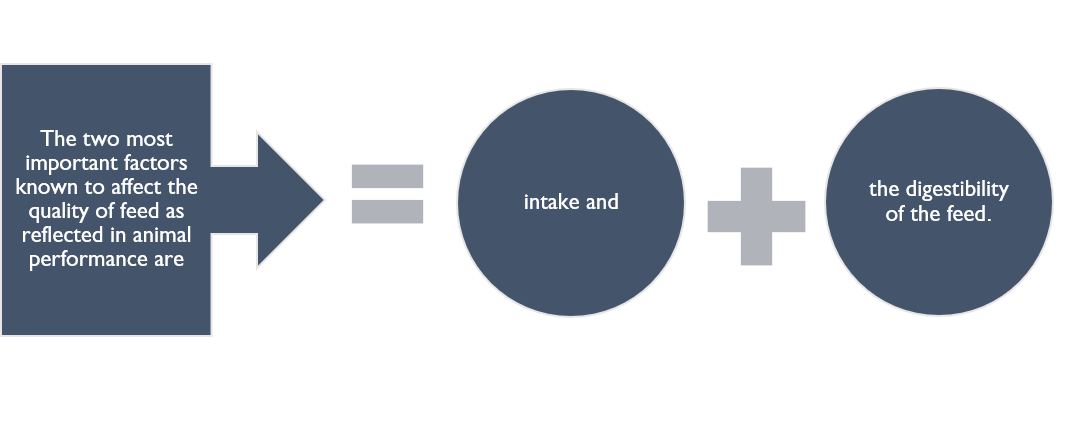Most feedlots will employ a nutritionist to help them to formulate their main feed blends. The availability of ingredients will always be a factor when a new feed blend is formulated and therefore there are usually significant differences in the exact feed blend formulas from one feedlot to the next.
Cattle in feedlots also have different nutritional needs and, depending on their state and age, will be fed different feed blends. Most commonly a good feed blend will consist of roughage and protein as we discussed in the previous section. Quite often though, the nutritionist within the feedlot might identify the need to add supplements such as vitamins and minerals to the feed blend in order to facilitate the weight gaining process.
Various terms are used to describe the nutritive value of feeds, including feeding value and quality feed. Often these terms are used without a clear definition of what is meant. Ultimately, the best criterion of feed quality is the performance of the animal consuming the feed.

In feedlots, concentrates formulated to achieve the most economic animal performance, are used. With concentrate feeding i.e. where feeds with a digestibility above 70% are fed, intake is limited by rumen capacity and the digestibility of the feed is the major determinant of animal performance. For feeds where the digestibility is below 70%, it has been shown that voluntary intake by the animal is the major factor limiting animal performance. A trial at Glen showed that approximately 80% of the difference in quality between roughages could be ascribed to voluntary intake and 20% to digestibility. With very poor-quality roughages, cattle cannot ingest enough feed for maintenance requirements. In the case of beef cattle, the main source of nutrients is the grass they graze. Farmers are therefore well-advised to evaluate the quality of grazing with care and ensure that cattle not only have enough feed but that they grow well, indicating that the quality of their feed is good. Experience has shown that when the grass is grazed at a relatively early stage of growth i.e. has not matured to the extent that its lignin content is still relatively low, animals perform well.
Different animals require different types of food and amounts of nutrients to satisfy their nutritional needs.
It is important that you have an understanding of the potency of the various ingredients that can be used to formulate feedlot feeds. Commonly when we refer to potency, we refer to the protein content of the different ingredients. There is however a range of factors that can have an influence on the protein content of the concentrates or roughages used in your feedlot blend, so it is important to have the various components tested on a regular basis in order to accurately measure the potency.
The following table contains various concentrates with their relative energy values compared to corn and suggested levels of use in feedlot diets:
Value of various energy sources compared to corn in feeder rations with ration restrictions.
|
Concentrate |
Value Compared Ration to Corn |
Restriction |
|
(%) |
(maximum %) |
|
|
Corn |
100 |
100 |
|
Animal fat |
160-180 |
5 |
|
Barley |
88-90 |
100 |
|
Beet pulp, dried |
88-95 |
50 |
|
Millet |
90-100 |
50 |
|
Milo |
85-95 |
100 |
|
Molasses |
70 |
5 |
|
Oats |
88-94 |
25 |
|
Rye |
80-85 |
20 |
|
Wheat |
100-105 |
40 |
|
Wheat bran |
65-80 |
10 |
|
Wheat middling’s |
70-85 |
20 |

With the nutrition tables, tables reflecting the chemical composition of feeds are available and, where the analysis of a feed is not available, these tables provide usable data.
Click here to view a video that explains the feedlot fattening of cattle.